




Chameleon
A Chameleon is a special kind of animal which has the ability to change colours from one to another based on its surroundings, this ability is referred to as Camouflage.
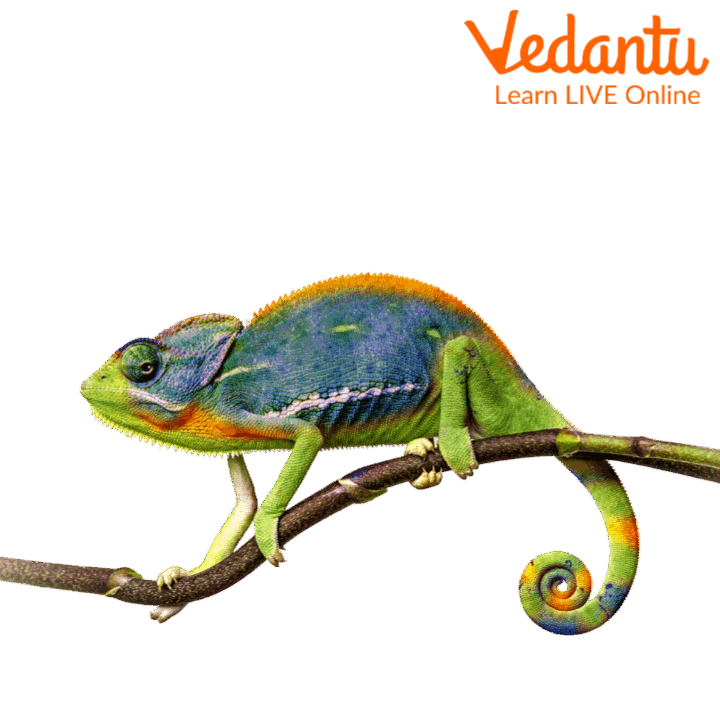
A Chameleon Changing Its Colour
What is a Chameleon?
The chameleon is a special organism which comes under the class Reptilia and lives on a tree. Commonly it is known as a lizard. It is widely known for its ability to camouflage and change its colour. Other than that it is an astonishing animal, some interesting facts about the Chameleon are mentioned further in this article.
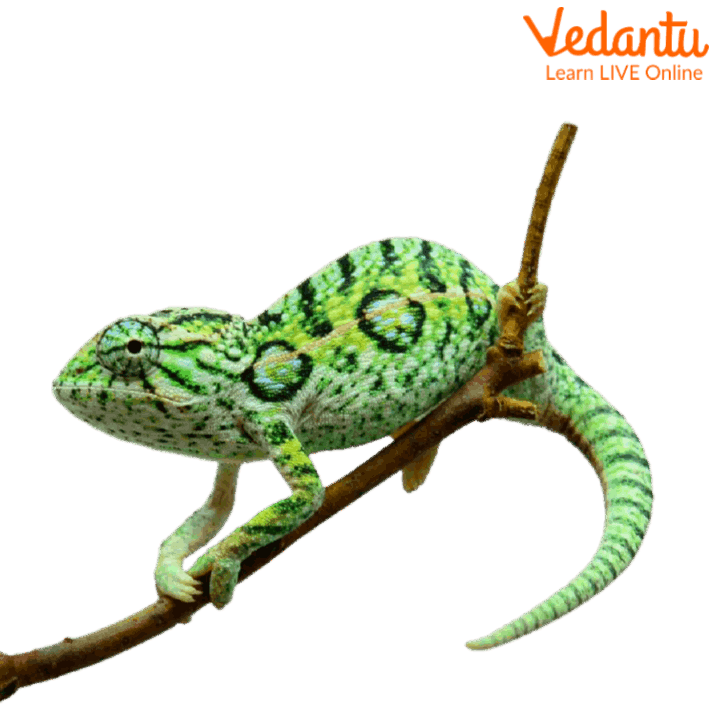
A Chameleon
Scientific Name of Chameleon
We give scientific names to every organism which we discover in order to avoid confusion among different countries and places, giving them a common scientific name assures that one organism has only one name which uniquely belongs to it and it only and is the same all throughout the world. This makes communication about the organism across the globe a lot easier.
The scientific naming system that we follow is known as the Binomial Naming System. In this system we give each organism a name which consists of two words, one is called its genus and the other is called its species.
The scientific name of Chameleon is Chamaeleo chamaeleon This genus has various species under it.
Information about Chameleon
Chameleons usually feed on large insects like grasshoppers, crickets, etc
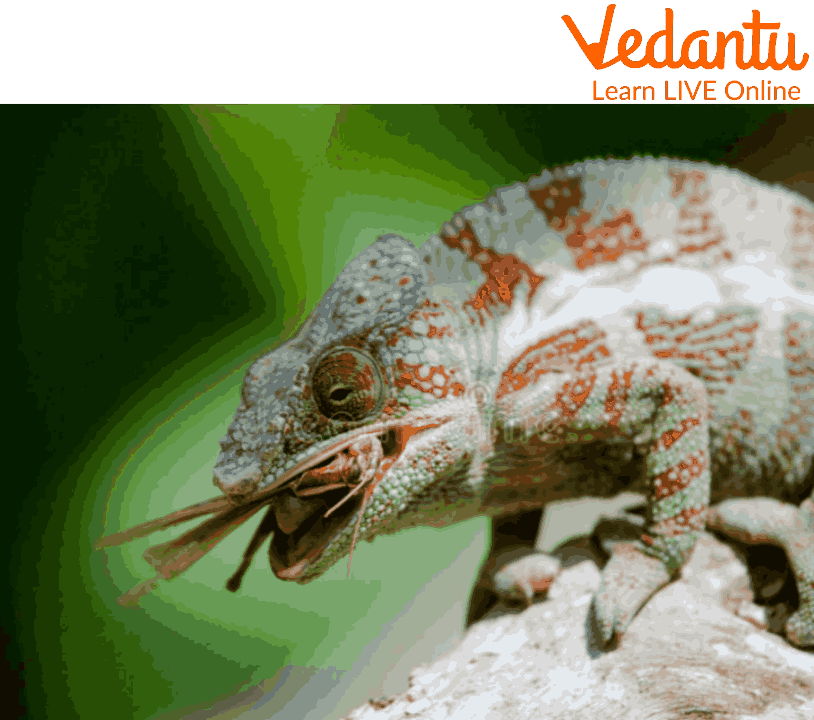
A Chameleon Feeding on an Insect
Some large species of Chameleons also feed on some small birds or some smaller species of Chameleons.
They are not deaf but they do not have an ear opening.
They are of varied sizes.
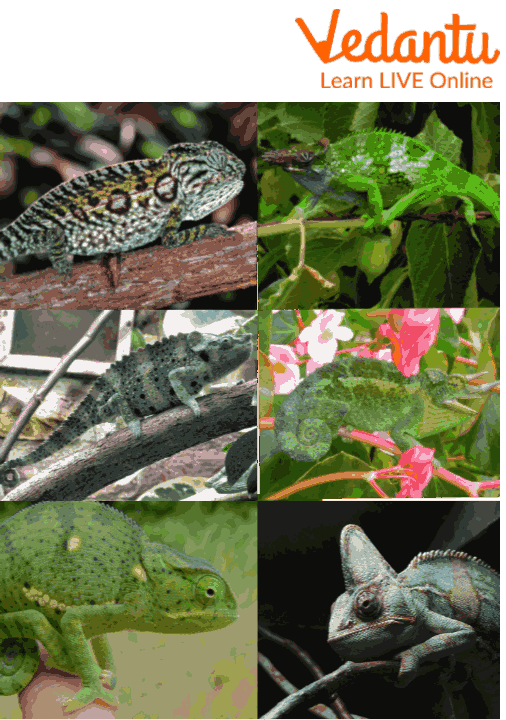
Chameleons of Different Colours and Sizes
Some species are as small as 15mm while some are as big as 69 cm.
They have a bump or crest on their head.
Special Features of Chameleon
Some special features that Chameleons have are mentioned below:
Their skin can change colours.
They have the ability to camouflage.
Their eyelids are bulging and connected.
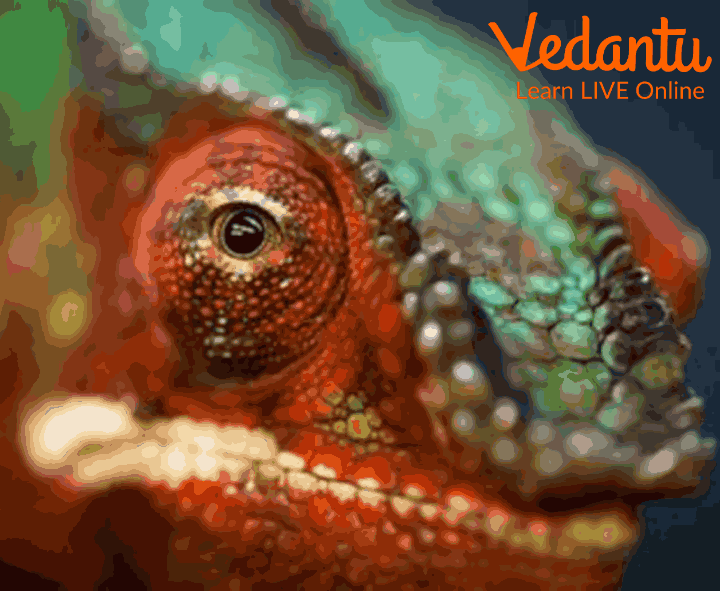
Chameleon’s Eyes
Their eyes have the ability to rotate 180 degrees.
Their tongue is almost twice their body length.
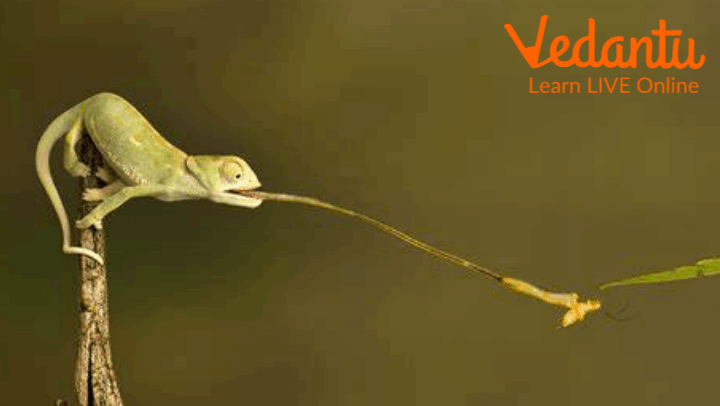
Chameleon’s Long Tongue
They can move their tongue very fast, their tongue can reach its prey in approx 0.7 seconds.
For feeding on their prey insect, they catch them using their tongue and apply a suction force on the insect once they catch it.
They don’t have ear openings.
Chameleon Eyes Facts

Eyes of Chameleon
They have bulging upper and lower eyelids which join together.
The pupil peeks out from the small gap between the joined eyelids.
Their eyes can rotate 180 degrees, giving them a 360-degree view.
Because of their rotating eyes, they can see two objects at the same time.
They can see insects from 5 to 10 metres away
They can also see things in both visible and ultraviolet light rays.
Interesting Facts About Chameleon
Chameleons are branch lizards and are a type of reptiles.
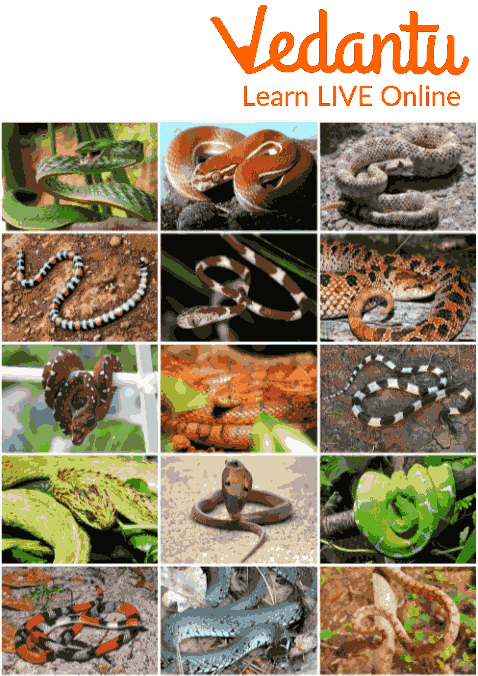
Different Examples of Reptiles
Till date, more than 200 species of lizards are recorded.
More than half of them are natives of Madagascar.

Madagascar
They have special colour cells known as chromatophores, which allow them to change their skin colour.
They also have the ability to camouflage, which is a means of protection from their predators by changing their skin colour to that of their surroundings, thus hiding their bodies from the predator.
They sometimes also change their colour for reasons other than camouflage, for example, when they are angry or want to scare other organisms off.
Their tongues are almost twice the length of their body.
They use their tongue to capture their prey.
Sample Questions
Complete the given statements by filling in blanks with the most appropriate answers:
1. Chameleons belong to the __________ group
Ans: Reptilia
2. They have the ability to change their skin colour which is referred to as _________.
Ans: Camouflage
3. They can rotate their eyes ______ degrees, which lets them have a ________ degree view.
Ans: 180, 360
4. They do not have ears _______, but are not deaf.
Ans: Openings
5. Their tongues are _______ the length of their bodies.
Ans: Twice
6. They usually live on ______ of trees.
Ans: Branch
7. They mainly feed on big ________.
Ans: insects
Learn by Doing
State whether the statements mentioned below are correct or not:
1. Chameleon refers to a specific animal rather than a group of animals.
Ans: False, Chameleon is a genus which has different species under it.
2. They can rotate their eyes.
Ans: True
3. Chameleons only feed on birds.
Ans: False, they mainly feed on insects.
4. Some large species of Chameleon can even feed on other Chameleon species.
Ans: True
5. Chameleon tongues are very long.
Ans: True
6. They use their tongue to catch their prey.
Ans: True
Summary
Chameleons are a group of special animals who belong to the class of Reptilia and are mostly known for having the ability to change colours. They have various special features like their bulging eyelids, rotating eyes, long tongue, absence of ear opening, etc. They mostly feed on insects, and use their tongue to capture them. They have various different species under this group which are of varied sizes.
FAQs on Facts About Chameleon
1. What type of climate does a chameleon prefer to live in?
Chameleons usually live in warmer climates.
2. What do we mean by chameleon?
The term chameleon in literal terms means Ground Lion. It is an animal which belongs to the phylum Reptilia and is mainly known for its camouflaging qualities.
Fill in the blanks and complete the following statements:
1. The tip of the tongue of a chameleon is most likely to be of ________
Ans: Suction Cup
2. The longest living species of chameleon has a life span of _________
Ans: 12 years.









